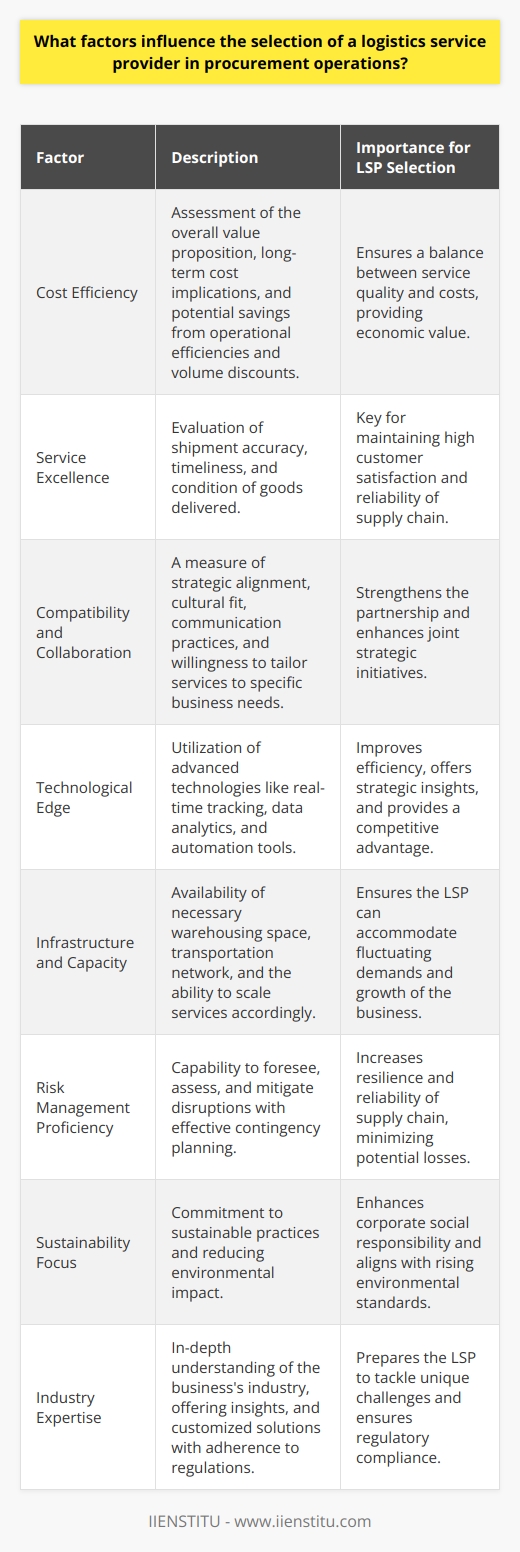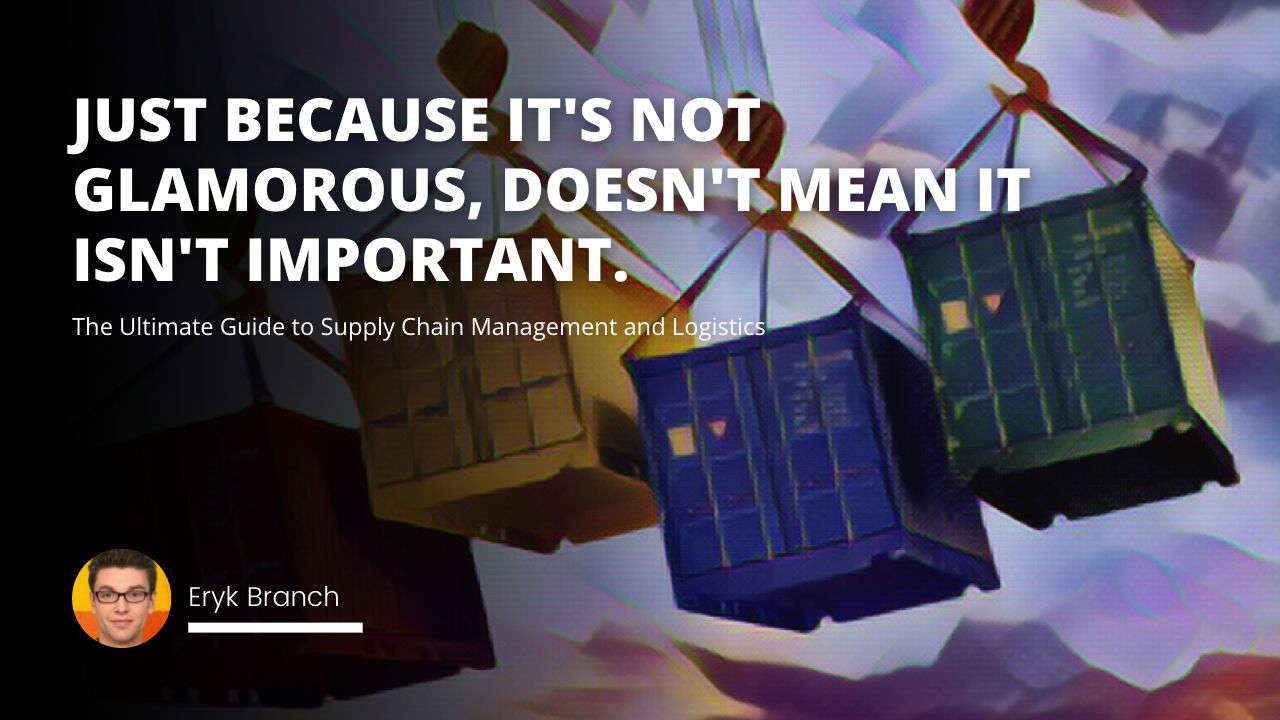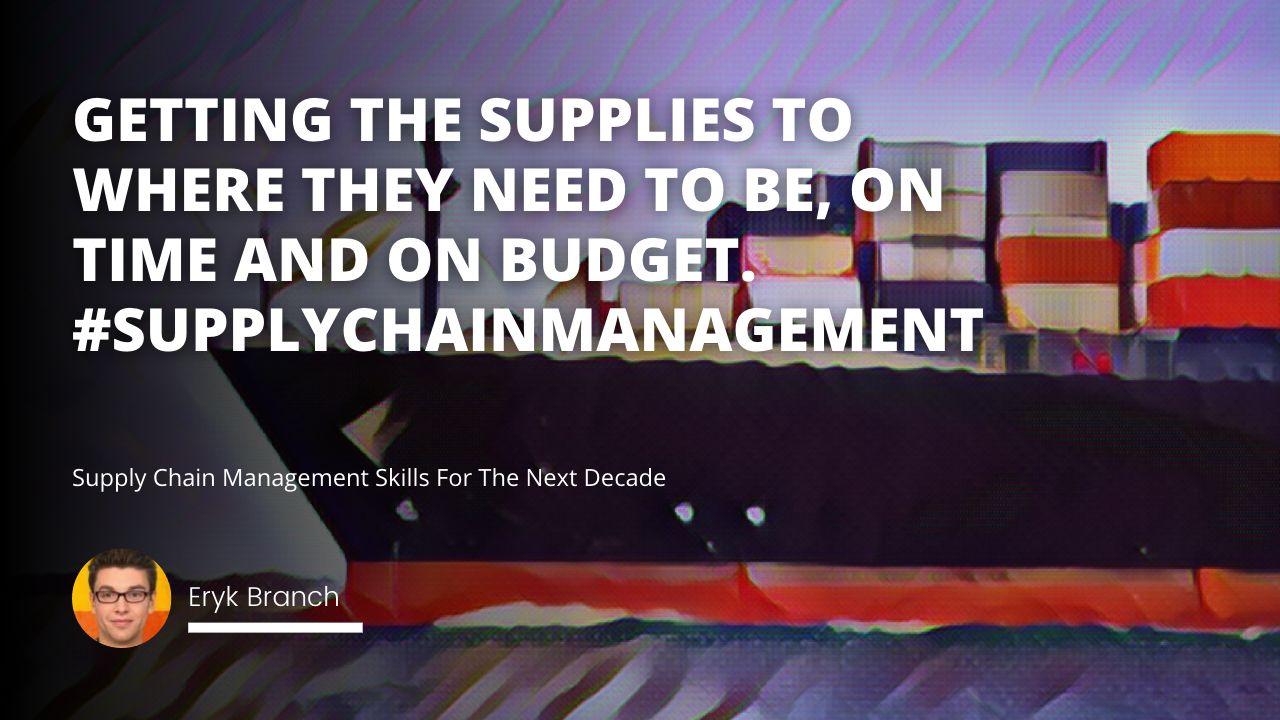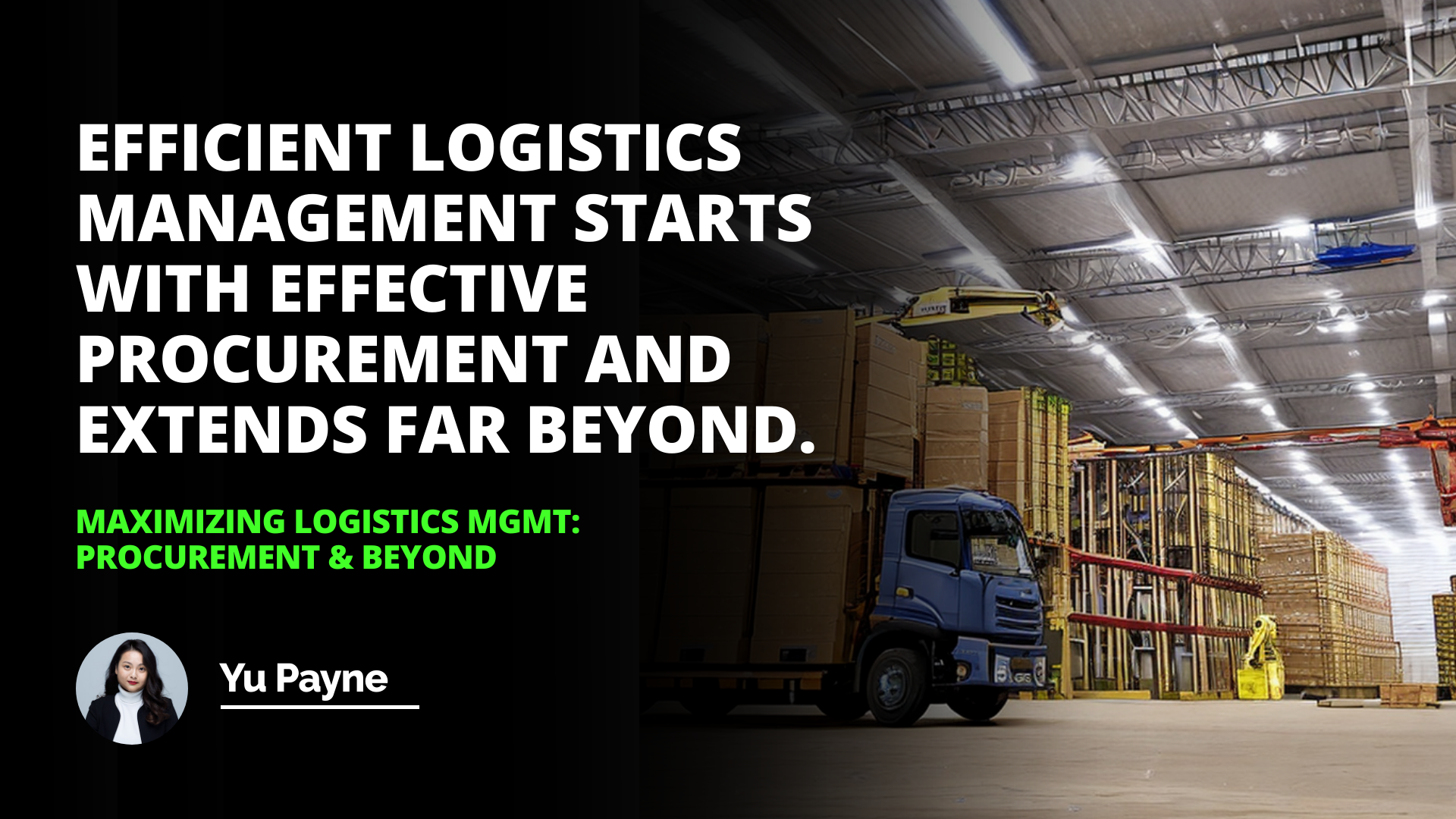
As someone who has spent years working in the logistics industry, I can confidently say that procurement, transportation, and inventory management are the three pillars of a successful supply chain. In my experience, companies that prioritize these areas are the ones that thrive in today's competitive market.
When I first started my career in logistics, I was overwhelmed by the complexity of the supply chain. There were so many moving parts, from sourcing raw materials to delivering finished products to customers. However, as I gained more experience, I began to see patterns emerge. I realized that the companies that excelled in procurement, transportation, and inventory management were the ones that consistently outperformed their competitors.
Introduction
Procurement: What It Is & Its Role in Logistics
Transportation & Storage: The Focus of Logistics
Procurement & Inventory Carrying Costs
Conclusion
Let's start with procurement. Procurement is the process of sourcing and acquiring goods and services from external suppliers. It's a critical function in logistics because it directly impacts the quality, cost, and availability of the materials needed to produce finished goods. I've seen firsthand how poor procurement practices can lead to production delays, quality issues, and cost overruns.
On the other hand, companies that have a well-oiled procurement machine are able to secure the best materials at the most competitive prices. They have strong relationships with their suppliers and are able to negotiate favorable terms and conditions. As a result, they're able to keep their costs down while maintaining high levels of quality.
One of the key benefits of effective procurement in logistics is that it helps to reduce inventory carrying costs. Inventory carrying costs refer to the expenses associated with holding and maintaining inventory, such as storage fees, insurance, and obsolescence. By sourcing materials in a timely manner and in the right quantities, companies can minimize the amount of inventory they need to hold, which in turn reduces their carrying costs.
Another way that procurement can help to reduce inventory carrying costs is by leveraging just-in-time (JIT) inventory management. JIT is a strategy that involves receiving materials just as they are needed for production, rather than holding large quantities of inventory in storage. This approach helps to reduce waste, improve cash flow, and minimize the risk of obsolescence.
However, implementing a JIT strategy requires a high degree of coordination between procurement and production. Buyers need to have a deep understanding of the production schedule and be able to anticipate demand in order to ensure that materials arrive just in time. This is where having strong relationships with suppliers can be incredibly valuable.
In addition to procurement, transportation is another critical component of logistics. Transportation involves the physical movement of goods from one location to another, whether it's from a supplier to a manufacturing facility or from a distribution center to a customer. It's often the most visible and costly aspect of logistics, which is why it's so important to get it right.
One of the biggest challenges in transportation is managing costs. Fuel prices, labor costs, and infrastructure expenses can all eat into a company's bottom line if not managed effectively. That's why many companies are turning to transportation management systems (TMS) to help optimize their transportation networks.
A TMS is a software platform that helps companies to plan, execute, and optimize their transportation operations. It can help to reduce costs by identifying the most efficient routes, consolidating shipments, and leveraging different modes of transportation. For example, a company might use a TMS to determine whether it's more cost-effective to ship goods via truck or rail based on factors such as distance, urgency, and cargo size.
Another way that companies can reduce transportation costs is by partnering with third-party logistics (3PL) providers. 3PLs are companies that specialize in providing logistics services, such as transportation, warehousing, and distribution. By outsourcing these functions to a 3PL, companies can benefit from economies of scale, expertise, and flexibility.
Logistics Management Strategies To Reduce Costs And İmprove Efficiency
İnterview Question Define Logistics Management How To Answer
How To Optimize Logistics Management For Faster Order Processing Time
Efficient logistics management starts with effective procurement and extends far beyond.
However, it's important to choose the right 3PL partner. Look for a provider that has experience in your industry, a proven track record of success, and a commitment to continuous improvement. You should also ensure that the 3PL's capabilities align with your specific needs and goals.
Finally, let's talk about inventory management. Inventory management is the process of overseeing and controlling the flow of goods throughout the supply chain, from raw materials to finished products. It's a critical function in logistics because it directly impacts a company's ability to meet customer demand while minimizing costs.

One of the key challenges in inventory management is striking the right balance between too much and too little inventory. Holding too much inventory can tie up cash flow, increase storage costs, and risk obsolescence. On the other hand, holding too little inventory can lead to stockouts, lost sales, and poor customer service.
To strike the right balance, many companies are turning to advanced inventory management techniques, such as:
1- ABC analysis: This technique involves categorizing inventory items based on their value and importance. Items in the A category are the most valuable and require the most attention, while items in the C category are the least valuable and require less attention.
2- Economic order quantity (EOQ): This is a formula that helps companies to determine the optimal order quantity for each inventory item based on factors such as demand, holding costs, and ordering costs.
3- Cycle counting: This involves regularly counting a subset of inventory items to ensure accuracy and identify discrepancies. It's a more efficient alternative to the traditional annual physical inventory count.
4- Demand forecasting: This involves using historical data and statistical models to predict future demand for each inventory item. By accurately forecasting demand, companies can ensure that they have the right amount of inventory on hand to meet customer needs.
Another way that companies can improve their inventory management is by implementing a warehouse management system (WMS). A WMS is a software platform that helps companies to manage the day-to-day operations of their warehouses, including receiving, putaway, picking, and shipping.
A WMS can help to improve inventory accuracy, reduce labor costs, and increase efficiency by automating many of the manual processes involved in warehouse operations. For example, a WMS might use barcodes or RFID tags to track inventory items as they move through the warehouse, reducing the risk of errors and improving visibility.
In conclusion, procurement, transportation, and inventory management are all critical components of a successful logistics operation. By focusing on these areas and implementing best practices, companies can reduce costs, improve efficiency, and better serve their customers.
Here are some key takeaways:
Procurement is essential for sourcing high-quality materials at competitive prices and reducing inventory carrying costs.
Transportation is often the most costly and visible aspect of logistics, but can be optimized through the use of transportation management systems and partnerships with 3PLs.
Inventory management is critical for balancing supply and demand, minimizing costs, and improving customer service.
By continually improving in these areas, companies can stay ahead of the competition and thrive in today's fast-paced business environment.
References:
1- Chopra, S., & Meindl, P. (2016). Supply Chain Management: Strategy, Planning, and Operation (6th ed.). Pearson.
2- Coyle, J. J., Langley, C. J., Novack, R. A., & Gibson, B. J. (2017). Supply Chain Management: A Logistics Perspective (10th ed.). Cengage Learning.
3- Jacobs, F. R., & Chase, R. B. (2018). Operations and Supply Chain Management (15th ed.). McGraw-Hill Education.
4- Monczka, R. M., Handfield, R. B., Giunipero, L. C., & Patterson, J. L. (2015). Purchasing and Supply Chain Management (6th ed.). Cengage Learning.
5- Wisner, J. D., Tan, K.-C., & Leong, G. K. (2016). Principles of Supply Chain Management: A Balanced Approach (4th ed.). Cengage Learning.
Frequently Asked Questions
What are the key components of logistics management and procurement?
Logistics management and procurement are critical components of any successful business. Logistics management manages the physical, financial, and operational aspects of moving goods from one point to another. This includes the planning, coordination, and execution of activities such as storage, transportation, and distribution.
On the other hand, procurement is obtaining goods and services for a company's use. It involves identifying, selecting, and acquiring the necessary items from the most suitable sources.
Logistics management includes the following components:
Transportation: This involves selecting the most cost-effective and efficient means of moving goods from one place to another. This includes selecting the mode of transport, such as air, water, road, or rail.
Warehousing: This involves selecting an appropriate location for the storage of goods. It involves selecting the right size and type of warehouse and the necessary storage equipment.
Inventory Control: This involves maintaining an accurate record of the items in stock. This includes tracking the quantity and quality of products to ensure that the correct items are always available.
Distribution: This involves ensuring that the products reach their destination on time and in the proper condition. This includes selecting the most efficient and cost-effective route for delivery.
Procurement involves the following components:
Evaluation: This involves evaluating potential suppliers and assessing their ability to meet the company's requirements. This includes assessing their prices, quality, and delivery times.
Negotiation: This involves negotiating the best possible terms with suppliers. This includes agreeing on the goods' quantity, quality, and price.
Contract Management: This involves managing the contract between the company and the supplier. This includes ensuring that the contract is followed and that all parties are held accountable for any breaches.
In conclusion, logistics management and procurement are essential components of any successful business. Logistics management involves the planning, coordination, and execution of activities such as transportation, warehousing, and inventory control.
Procurement involves the evaluation, negotiation, and contract management of suppliers. Both components are essential for the smooth running of a business.

How can inventory carrying costs be minimized in logistics management?
Inventory carrying costs are an ongoing concern for logistics managers, and reducing them can help boost a business’s profitability. Several strategies can be employed to minimize inventory carrying costs.
The first is to ensure that inventory is tracked and managed accurately. This means keeping track of inventory levels, including the number of items, the location of the inventory, and the cost of each item. Accurate tracking will allow for better planning, which can help to reduce inventory carrying costs. In addition, it can help to identify which items are not selling quickly and can be discounted or removed from the inventory.
Another strategy is to optimize supplier relationships. Many companies can negotiate discounts from their suppliers and secure better terms for their orders. This can reduce the cost of items purchased, which can, in turn, reduce inventory carrying costs. In addition, negotiating longer payment terms can help to reduce the amount of money spent on inventory.
Finally, it is essential to ensure that inventory levels are reasonable. This means businesses should only order the inventory they need and avoid overstocking. Keeping inventory levels low helps to reduce the cost of holding inventory, as well as the cost of storage and transportation.
Reducing inventory carrying costs is an essential part of logistics management. Accurate tracking, optimizing supplier relationships, and keeping inventory levels low are all strategies that can be employed to minimize inventory carrying costs. By implementing these strategies, businesses can improve their profitability and maximize their return on investment.
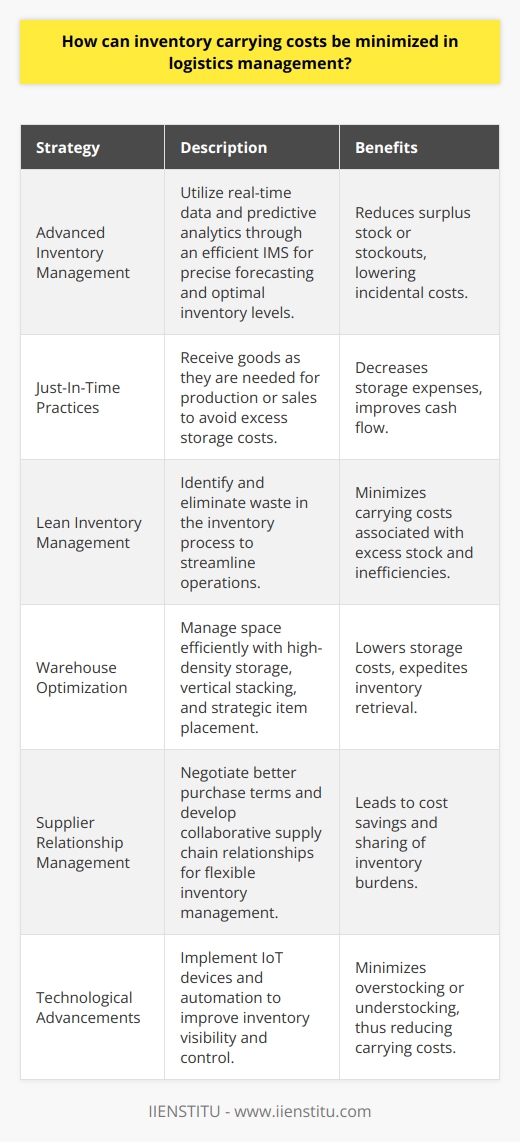
What are the benefits of maximizing logistics management and procurement?
Efficient logistics management and procurement are essential elements of a successful supply chain. The optimization of these processes can provide substantial benefits to organizations. This article will explore the advantages of maximizing logistics management and procurement.
First, maximized logistics management and procurement can provide cost savings. Streamlining operational processes enables organizations to reduce overhead expenses, such as inventory and shipping costs. In addition, data-driven insights can help organizations identify further opportunities to reduce their costs.
Second, maximizing logistics management and procurement can improve customer satisfaction. By delivering goods and services on time, organizations can ensure a positive customer experience. This can help to build customer loyalty and increase sales. In addition, improved procurement practices can enable organizations to provide customers with higher-quality products and services.
Third, maximizing logistics management and procurement can help organizations to remain competitive. Organizations can respond quickly to changing market conditions and customer demands by making the most of their supply chain. This can help them to stay ahead of the competition and maintain their competitive edge.
Finally, maximizing logistics management and procurement can give organizations better control over their supply chain. By gaining visibility over their operations, organizations can ensure that their supply chain is running smoothly and can take steps to prevent disruptions. This can improve the reliability and efficiency of their supply chain.
In summary, there are numerous advantages to maximizing logistics management and procurement. Cost savings, improved customer satisfaction, increased competitiveness, and better control over the supply chain are some benefits that can result from optimizing these processes. Organizations that make the most of their logistics management and procurement practices can gain a significant competitive advantage.

How do procurement and logistics management work together to achieve efficient supply chain operations?
The Integration of Procurement and Logistic Management
To attain efficient supply chain operations, procurement and logistics management must function harmoniously. Procurement is responsible for acquiring materials, goods, and services needed for a company to carry out its operations. It involves activities like selecting suppliers, negotiating contracts, and managing relationships with vendors. Logistics management, on the other hand, focuses on planning, implementing, and controlling the movement and storage of materials, goods, and services within the supply chain.
The Coordinated Approach in Supply Chain Operations
Both procurement and logistics management play a key role in managing the inward and outward flow of materials within a supply chain. Together, they help ensure that the right products are available for customers at the right time, place, and cost. By integrating procurement and logistics management, a company can reduce lead times, minimize distance traveled, and realize economies of scale. This collaborative approach leads to better customer service, higher profits, and a greater competitive advantage.
Cost Minimization and Operational Efficiency
Procuring materials and goods at the lowest possible price reduces overall supply chain costs, which can translate to lower product prices and improved margins. Therefore, a strong relationship between procurement and logistics management is essential to achieving cost optimization. By working together to negotiate with suppliers, both functions can adapt to market changes, streamline operations, and improve supplier relations. This collaboration not only ensures cost-effective solutions but also enhances operational efficiency within the supply chain.
Improved Visibility and Forecast Accuracy
When procurement and logistics management collaborate, the ability to track and trace information throughout the supply chain becomes more accurate. By sharing information, both functions can generate better forecasts, leading to improved inventory management and demand planning. Enhanced visibility also means better supplier performance assessment and risk management, further contributing to supply chain efficiency.
In conclusion, the integration of procurement and logistics management is critical for achieving efficient supply chain operations. A coordinated approach, which focuses on cost minimization and operational efficiency, improves visibility and forecast accuracy. This ultimately leads to better customer service, increased profitability, and a stronger competitive advantage for the company.
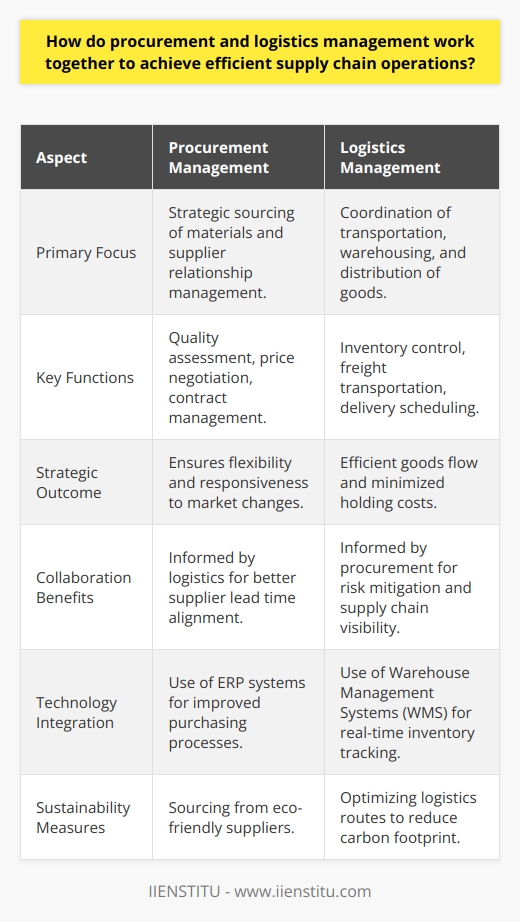
What are the 7 R's for better logistics management, and how can they be applied effectively?
The 7 R's Framework
The 7 R's framework is a practical approach for improving logistics management in various industries. Comprising seven fundamental principles, the framework aims to enhance the efficiency of supply chain operations while reducing costs and fostering sustainable practices.
Right Product
Choosing the right product to satisfy customer needs is crucial. One must thoroughly research the market and analyze customer preferences, ensuring the selected product meets their expectations and demands. Accurate forecasting and planning can improve product selection and overall supply chain performance.
Right Quantity
Managing inventory levels is vital in logistics. The right quantity of products should be maintained to avoid stockouts or excess inventory. Implementing inventory control techniques such as economic order quantity (EOQ) and just-in-time (JIT) can help achieve optimal inventory levels.
Right Condition
Products should be in the right condition for customers. Proper handling, storage, and transportation are of utmost importance to maintain product quality. Implementing quality management systems like ISO 9001, and adhering to health and safety standards is necessary for maintaining product conditions.
Right Place
Delivering products to the right place is another critical aspect of logistics management. Efficient route planning and distribution strategies can reduce transportation costs, improve delivery timings, and significantly enhance customer satisfaction. Geographic information system (GIS) tools can optimize route planning processes.
Right Time
Timely deliveries are essential in fulfilling customer expectations. Advanced planning and scheduling tools should be utilized to ensure accurate delivery timings, considering factors like lead times and unforeseen contingencies. Effective communication with suppliers and customers can further improve delivery performance.
Right Cost
Achieving cost efficiency is an ongoing goal for logistics management. The 7 R's approach encompasses strategies to minimize expenses through process optimization, technology implementation, and waste reduction. Continuous improvement in supply chain operations is vital for better cost management.
Right Customer
Delivering the right product to the right customer is crucial for targeted marketing and personalized customer experiences. Data analysis and customer relationship management (CRM) systems can aid in identifying the right target audience, fostering customer loyalty, and encouraging repeat purchases.
In conclusion, the 7 R's framework for logistics management emphasizes the importance of accurate product selection, inventory management, product condition, efficient deliveries, cost efficiency, and customer satisfaction. Adopting these principles and integrating them into the supply chain operations can significantly improve overall business performance and sustainability.
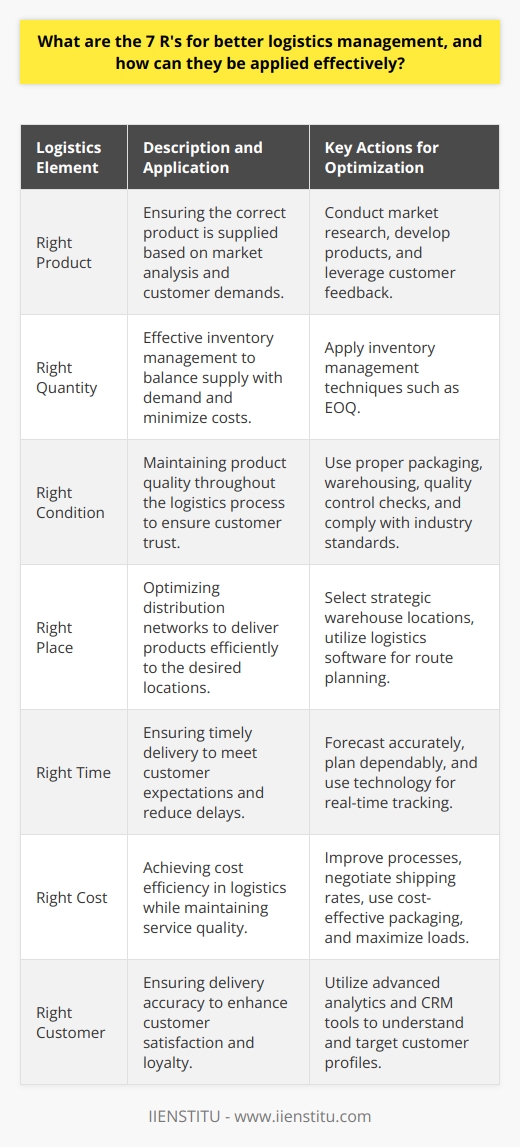
How can organizations implement strategies to improve their logistics management and maximize supply chain performance?
Understanding the Current Situation
To improve logistics management and maximize supply chain performance, organizations should initially perform a thorough analysis of their existing supply chain process. This involves identifying areas of inefficiency, bottlenecks, and opportunities for improvement in order to develop an effective strategy.
Adopting Modern Technologies
One strategy for enhancing logistics management is to adopt modern technological solutions. Organizations can make use of advanced software, such as supply chain management systems, transportation management systems, and warehouse management systems. These tools enable organizations to optimize their logistics operations through improved communication, data analysis, and automation.
Establishing Effective Collaboration
Establishing effective collaboration among different departments and partners is another essential strategy. Aligning the goals and objectives of suppliers, manufacturers, transportation carriers, and retailers will lead to a more streamlined and efficient supply chain. Implementing performance indicators, communication channels, and shared decision-making processes will further strengthen the collaborative environment.
Improving Visibility and Responsiveness
To maximize supply chain performance, organizations must enhance their visibility and responsiveness to fluctuations in supply and demand. This can be achieved through real-time tracking, monitoring, and analysis of relevant metrics such as inventory levels, transportation schedules, and customer demand patterns. By quickly identifying potential issues, organizations can react proactively and make informed decisions to mitigate any negative impacts on the supply chain.
Investing in Continuous Improvement
Organizations that invest in ongoing training and development of their employees will greatly benefit from enhanced logistics management capabilities. Providing employees with the necessary skills and knowledge to recognize inefficiencies, implement improvements, and adapt to changing market conditions will foster a culture of continuous improvement. Utilizing Lean, Six Sigma, or other performance improvement methodologies can facilitate this process.
Implementing Risk Management
Finally, organizations must identify and address potential supply chain risks, such as natural disasters, geopolitical disruptions, or supplier and carrier-related issues. Developing comprehensive risk management plans, including contingency measures and alternative sourcing options, will ensure that organizations can maintain efficient supply chain performance, even in the face of unexpected disruptions.
In conclusion, organizations can implement several strategies to improve their logistics management and maximize supply chain performance. By understanding the current situation, adopting modern technologies, establishing effective collaboration, improving visibility and responsiveness, investing in continuous improvement, and implementing risk management, organizations can significantly enhance their supply chain operations and enjoy increased competitiveness and profitability.
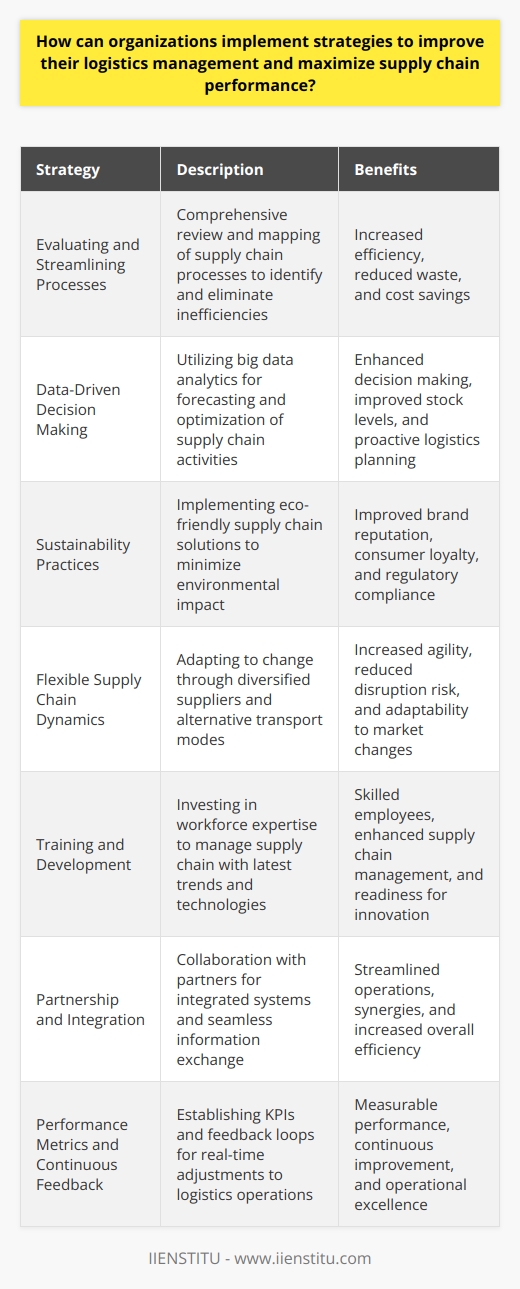
What is the role of technology in procurement and logistics management?
Role of Technology in Procurement
The role of technology in procurement and logistics management is essential for streamlining processes, optimizing efficiency, and reducing costs. Through numerous advancements, technology has significantly contributed to making procurement and logistics management more effective.
Automation of Manual Tasks
In procurement and logistics management, automation has played a major role in automating manual tasks, such as order processing, invoicing, and inventory management. This automation reduces human error and significantly cuts the time spent on administrative tasks, allowing professionals to focus on strategic decision-making.
Data Analysis and Decision Support
Technology also enables the collection and analysis of vast amounts of data, which is crucial for informed, data-driven decision-making. With analytical tools such as AI and Machine Learning, procurement and logistics managers can identify trends, patterns, and potential risks, ensuring that decisions are accurate and responsive to the evolving supply chain landscape.
Real-Time Communication
Through technology, real-time communication has become feasible, enabling seamless interactions among procurement and logistics professionals, suppliers, and customers. By facilitating real-time communication, stakeholders can now swiftly address issues and discrepancies in the supply chain, leading to improved collaboration, transparency, and risk mitigation.
Track and Trace Capabilities
Logistics management benefits immensely from track and trace capabilities provided by technology. Utilizing tools such as GPS and RFID, businesses can monitor their shipments in real-time, allowing them to proactively respond to disruptions and delays in the supply chain.
Integration of Systems
Technology has enabled the integration of various procurement and logistics systems, thus increasing information accessibility and facilitating more cohesive management processes. Integrating systems promotes data sharing and system interoperability, which can lead to more efficient and effective supply chain management practices.
In conclusion, technology plays a pivotal role in procurement and logistics management by streamlining processes, enhancing efficiency, reducing costs, and enabling informed decision-making. As technology continues to advance, businesses need to adopt suitable tools and stay ahead of the curve to ensure their supply chain maintains its competitive edge.
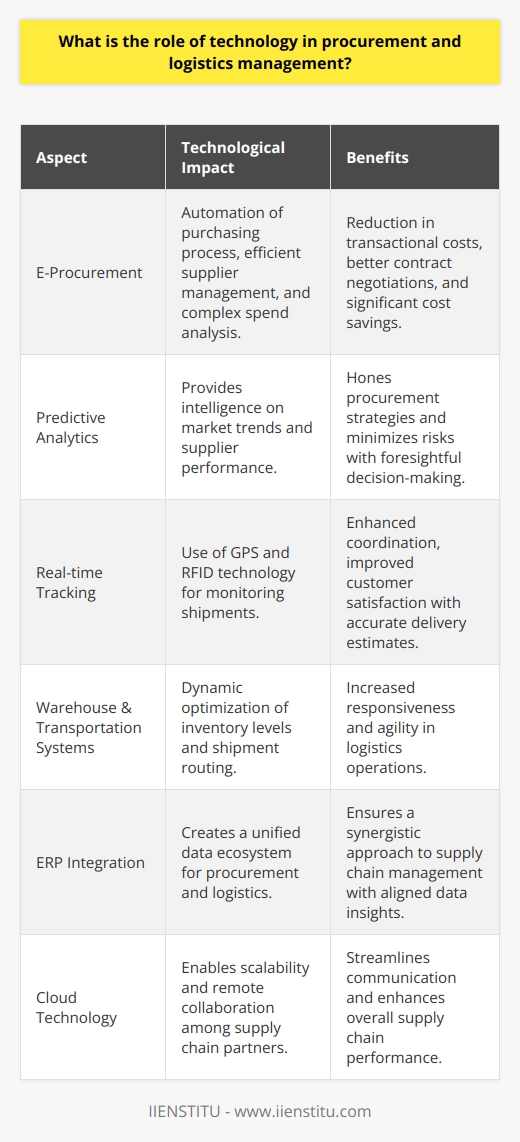
How do sustainable practices impact procurement and logistics management?
Sustainable Practices in Procurement
Sustainable practices in procurement directly influence the sourcing and selection of suppliers, materials, and services. Companies adopting such practices often prioritize suppliers that demonstrate environmental stewardship, social responsibility, and economic viability. As a result, procurement managers may need to reassess their supplier base, placing greater emphasis on those with environmentally friendly products, reduced waste generation, and ethical labor practices.
Reduced Resource Consumption
In logistics management, sustainable practices often lead to reduced resource consumption by focusing on the efficient use of transportation, energy, and packaging materials. For example, companies may implement strategies to optimize shipping routes, reduce empty running, promote load consolidation, or use alternative fuel sources. These practices not only mitigate the environmental impacts of transportation and distribution but also offer cost-saving opportunities through improved fuel efficiency, reduced wear and tear, and minimized waste disposal costs.
Enhanced Collaboration and Transparency
Sustainable procurement and logistics management also create opportunities for enhanced collaboration and transparency among various stakeholders in the supply chain. Companies that adopt these practices can benefit from increased visibility and traceability of their products, especially in terms of environmental and social performance. This increased transparency, often facilitated by technological advancements, allows for better decision-making and improved trust among business partners, customers, and regulators.
Risk Mitigation and Compliance
Sustainable practices also support risk mitigation and regulatory compliance efforts. They help companies identify and address potential risks associated with their supply chains, such as disruptions due to climate change, resource scarcity, or ethical concerns. By adopting sustainable procurement and logistics practices, companies can ensure compliance with environmental regulations as well as meet increasing customer and stakeholder expectations for responsible business conduct.
Long-term Cost Savings
While sustainable practices may initially require additional investments in technology, training, or supplier assessments, they often lead to significant long-term cost savings. For example, procurement teams that prioritize energy-efficient products or recycled materials can achieve long-term savings related to energy consumption and waste management. Additionally, logistics teams can benefit from reduced fuel costs, improved vehicle utilization, and decreased maintenance expenses.
In conclusion, the integration of sustainable practices in procurement and logistics management has significant implications for resource consumption, supplier collaboration, risk management, and long-term cost savings. By adopting these practices, companies can enhance their business performance, meet stakeholder expectations, and contribute to global sustainability goals.
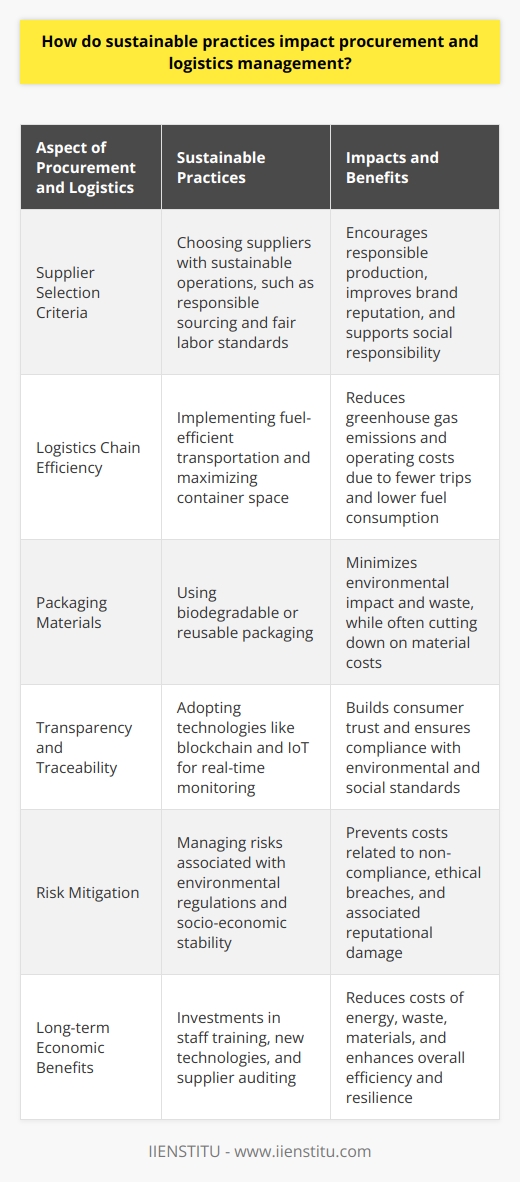
What factors influence the selection of a logistics service provider in procurement operations?
Logistics Provider Selection Criteria
The selection of a logistics service provider (LSP) is crucial for the success of procurement operations. Several factors influence this decision-making process, including cost, service quality, and strategic alignment. These factors are outlined below:
Cost Considerations
One key factor is the cost of the logistics services provided. Companies must evaluate LSPs based on their ability to offer competitive pricing, generate cost savings, and maintain cost transparency. The total cost of logistics services should also consider any possible hidden fees, taxes, and surcharges.
Service Quality
Another major factor is the quality of the services offered by the LSP. Companies need to assess the reliability, flexibility, and responsiveness of potential providers. This evaluation includes punctuality in deliveries and order fulfillment rates, the ability to adapt to changes in demand, and the provider's communication skills, especially when facing unexpected challenges.
Strategic Alignment
Companies must also ensure that the chosen LSP can effectively support their strategic goals and objectives. This includes the provider's industry experience, understanding of the company's business processes, and their ability to offer customized or value-added services when needed.
Technology and Infrastructure
The technological capabilities of a logistics provider play a significant role in ensuring the smooth execution of procurement operations. Companies must consider the LSP's utilization of advanced technology solutions, such as warehouse management systems, transportation management systems, and e-commerce integration. Additionally, it is essential to evaluate the LSP's physical infrastructure, such as warehouse facilities and transportation fleet, as this directly impacts their ability to deliver quality services.
Risk Management
Mitigating supply chain risks is a crucial factor in selecting an LSP. Companies must determine their LSP's ability to handle disruptions, such as transportation delays, weather impacts, or political risks. The provider's risk management strategies, contingency planning, and insurance coverage should be thoroughly assessed.
Sustainability Initiatives
Lastly, environmental, social, and governance (ESG) factors have become increasingly relevant in selecting an LSP. Companies should prioritize LSPs with responsible ESG practices, such as eco-friendly transportation options, green warehousing solutions, and fair labor practices.
In summary, companies should comprehensively assess various factors, including cost, service quality, strategic alignment, technology and infrastructure, risk management, and sustainability initiatives, when selecting a logistics service provider for their procurement operations. This comprehensive approach ensures the efficient and effective implementation of their procurement strategies.
